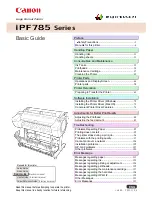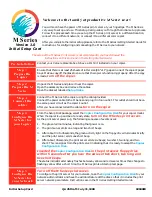
Introduction
6-3
IPP
IPP (Internet Printing Protocol) is a protocol for end users’ most common
printing situations over the Internet. It allows users to find out about a printer’s
capabilities, submit print jobs to a printer, find out the status of the printer or
print job, and cancel a previously submitted print job.
For more information on using IPP, see “Printing via IPP (Internet Printing
Protocol)” on page 6-5.
LPD/LPR
LPD/LPR (Line Printer Daemon/Line Printer Request) is a platform-
independent printing protocol that runs over TCP/IP. Originally implemented
for BSD UNIX, its use has spread into the desktop world and is now an
industry standard.
SLP
SLP (Service Location Protocol) simplifies the discovery and use of network
resources such as printers by automating a number of network services.
Traditionally, in order to locate services on the network, users had to supply
the host name or network address of the machine providing the desired ser-
vice. This has created many administrative problems.
However, SLP (Service Location Protocol) simplifies the discovery and use of
network resources such as printers by automating a number of network ser-
vices. It provides a framework that allows networking applications to discover
the existence, location, and configuration of networked services.
With SLP users no longer need to know the names of network hosts. Instead,
they need to know only the description of the service they are interested in.
Based on this description, SLP is able to return the URL of the desired
service.
Software developers also find SLP useful. In many cases, SLP can eliminate
the need for software applications to prompt users for host names, or to read
host names from configuration files.
Unicast, Multicast, and Broadcast
SLP is a unicast and a multicast protocol. This means that messages can be
sent to one agent at a time (unicast) or to all agents (that are listening) at the
same time (multicast). However, a multicast is not a broadcast. In theory,
broadcast messages are “heard” by every node on the network. Multicast
differs from broadcast because multicast messages are only “heard” by the
nodes on the network that have “joined the multicast group.”
Summary of Contents for Magicolor 2300 DL
Page 1: ...magicolor 2300 DL NIC Reference Guide 1800684 001B ...
Page 6: ......
Page 7: ...1 Installing Your Printer in Windows Environments ...
Page 17: ...2 Understanding the Network Configuration Menus ...
Page 22: ......
Page 23: ...3 Using PageScope Light ...
Page 48: ......
Page 49: ...4 Using Print Monitor ...
Page 51: ...5 Using the Status Display ...
Page 56: ......
Page 57: ...6 Network Printing ...
Page 72: ......














































